Anticoagulant Bleeding Risk Calculator
Personalized Bleeding Risk Assessment
Enter your details to get a personalized bleeding risk assessment and prevention advice.
Why Blood Thinners Can Be Dangerous - And How to Stay Safe
If you're on a blood thinner, you're not just taking a pill to prevent a stroke or clot. You're walking a tightrope. One wrong move - a fall, a missed dose, a new medication - and you could start bleeding internally without warning. Anticoagulants save lives, but they also put you at risk for serious, even deadly, bleeding. In Australia, about 1 in 50 adults over 65 are on these drugs. And every year, hundreds end up in emergency rooms because of bleeding complications.
The truth? Most of these incidents are preventable. It’s not about avoiding the medication. It’s about understanding how it works, who’s most at risk, and what steps actually reduce your chance of hemorrhage.
How Anticoagulants Work - And Why They Bleed
Blood clots form when platelets and proteins like fibrin stick together. Anticoagulants slow this process down. But they don’t make your blood "thin" like water. They interfere with specific clotting factors.
There are three main types:
- Warfarin: A vitamin K blocker. It’s been around since the 1950s. Needs regular INR blood tests to make sure you’re in the safe zone (usually INR 2-3). Too low? You risk clots. Too high? You bleed.
- DOACs (dabigatran, rivaroxaban, apixaban, edoxaban): Newer drugs that target single clotting factors. No routine blood tests. Fixed doses. But they’re harder to reverse if you bleed.
- Heparins (enoxaparin, unfractionated heparin): Used in hospitals or short-term. Injected under the skin. Can cause heparin-induced thrombocytopenia - a rare but dangerous drop in platelets.
Here’s the catch: all of them increase bleeding risk. The American College of Cardiology says 1-3% of people on anticoagulants have a major bleed each year. That’s 1 in 30 to 1 in 100. For someone over 75, that risk doubles or triples.
Who’s Most at Risk for Bleeding?
Not everyone on blood thinners bleeds. But some people are far more vulnerable. Here’s who needs extra caution:
- People over 75: Age reduces kidney function and changes how drugs are processed. Bleeding risk jumps significantly.
- Those with kidney problems: DOACs are cleared by the kidneys. If your creatinine clearance (CrCl) is below 30 mL/min, you’re at much higher risk. Apixaban is safest here - it’s less dependent on kidneys than rivaroxaban or edoxaban.
- People on multiple blood thinners: Taking aspirin, clopidogrel, or NSAIDs like ibuprofen with warfarin or DOACs? That’s a recipe for trouble. Dual therapy can boost bleeding risk by 50-70%.
- Those with uncontrolled high blood pressure: High pressure bursts fragile blood vessels. If you’re on anticoagulants, even a small head injury can turn into a brain bleed.
- People with liver disease or stomach ulcers: These conditions already make bleeding more likely. Add anticoagulants? The risk multiplies.
One real-world example: a 78-year-old man in Sydney was prescribed apixaban for atrial fibrillation. He started taking ibuprofen for arthritis pain. Within two weeks, he had a gastrointestinal bleed. His INR was normal. His DOAC level wasn’t tested. But the combination did it.
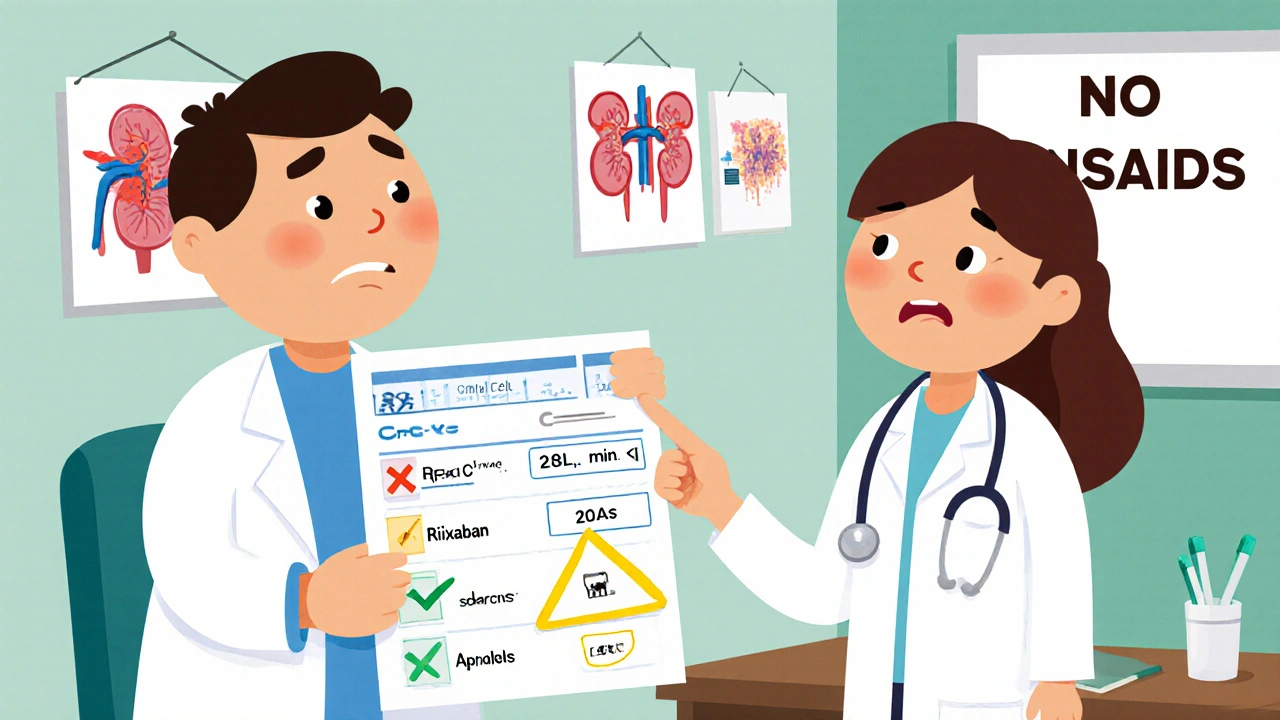
How to Prevent Bleeding - Practical Steps
Prevention isn’t complicated. It’s consistent. Here’s what actually works:
- Know your kidney function. Get a CrCl test at least once a year. If you’re on a DOAC and your kidney function drops, your dose may need to change. Apixaban can be used down to CrCl 15 mL/min. Rivaroxaban? Not below 30.
- Avoid NSAIDs like ibuprofen and naproxen. Use paracetamol (acetaminophen) instead for pain. Even low-dose aspirin should only be taken if your doctor specifically says so.
- Don’t skip or double doses. Missing a dose raises clot risk. Doubling up raises bleeding risk. Set phone alarms. Use pill organizers. If you miss a dose, check the drug’s guidelines - some say take it if it’s within 6-12 hours, others say skip it.
- Wear a medical alert bracelet. Emergency responders need to know you’re on anticoagulants. In a crash or fall, every minute counts.
- Use a soft-bristle toothbrush and electric razor. Minor cuts from brushing or shaving can turn into big problems. Avoid contact sports. Fall-proof your home - remove rugs, install grab bars.
- Get your INR checked regularly if on warfarin. Aim for a Time in Therapeutic Range (TTR) above 70%. If your TTR drops below 60%, your bleeding risk rises 15% for every 10% drop.
- Tell every doctor, dentist, and pharmacist you’re on anticoagulants. Even a simple tooth extraction can bleed uncontrollably if they don’t know.
Reversal Agents - What Happens When You Bleed?
If you have a major bleed - brain, gut, or internal - time is everything. The good news? We now have specific antidotes.
- For warfarin: Four-factor prothrombin complex concentrate (4f-PCC) works in 15 minutes. Vitamin K helps long-term but takes hours to days.
- For dabigatran: Idarucizumab (Praxbind) reverses it completely. Given as two IV vials.
- For apixaban, rivaroxaban, edoxaban: Andexanet alfa (Andexxa) is the antidote. It’s expensive - around $13,000 per dose - and not always available in smaller hospitals.
- For heparin: Protamine sulfate reverses unfractionated heparin. But it doesn’t work well for enoxaparin.
Here’s the problem: most people don’t know these exist. Emergency staff in rural areas may not have andexanet alfa on hand. That’s why prevention matters more than reversal.
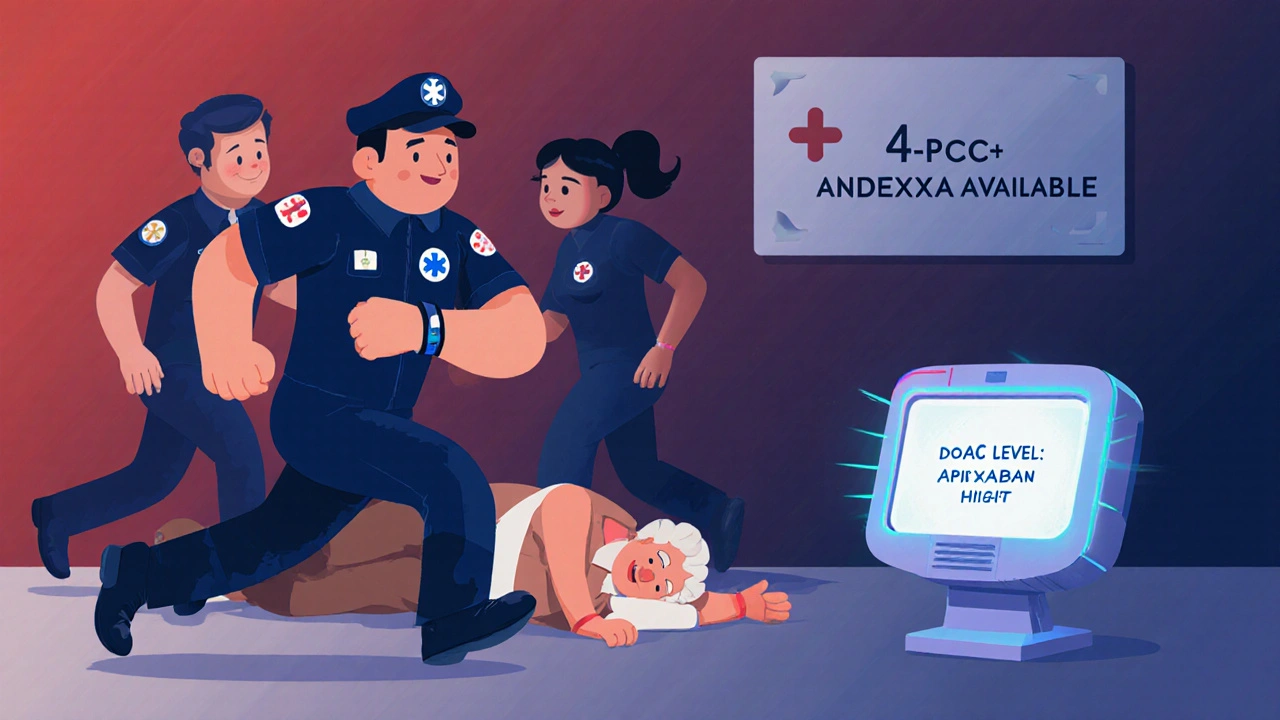
When to Restart After a Bleed
Many patients stop their anticoagulant after a bleed - and never restart. That’s often the worst decision.
Studies show that if you have atrial fibrillation and stop your blood thinner after a bleed, your risk of stroke within a year jumps from 5% to 12%. That’s a 140% increase.
Doctors now follow this rule:
- If your clot risk is low (e.g., CHA₂DS₂-VASc score under 3, provoked DVT), you might stop permanently.
- If your clot risk is high (e.g., mechanical valve, unprovoked PE, atrial fibrillation with prior stroke), restart as soon as bleeding is controlled - often within days.
For example: a woman with a mechanical mitral valve had a gastrointestinal bleed. Her team waited 7 days, then restarted apixaban at a lower dose. She had no re-bleeding. Her valve stayed safe.
What’s New in Bleeding Prevention
Research is moving fast. One promising drug, ciraparantag, is being tested as a universal antidote - one injection that reverses all major anticoagulants. It’s not approved yet, but early trials show it works on DOACs and heparins.
Also, new point-of-care tests are being developed to measure DOAC levels quickly - like an INR machine for apixaban or rivaroxaban. If you’re bleeding, a nurse could test your blood in 10 minutes instead of waiting 24 hours for a lab result.
These tools could reduce emergency bleeds by 15-20% in the next five years.
Final Thought: It’s Not About Avoiding Blood Thinners - It’s About Managing Them
Anticoagulants aren’t the enemy. Clots are. A stroke from atrial fibrillation can leave you paralyzed. A pulmonary embolism can kill you in minutes. The goal isn’t to stop taking these drugs. It’s to take them safely.
Work with your doctor. Know your numbers. Avoid the risky combinations. Use the tools that protect you. Most people on anticoagulants live normal, active lives - as long as they stay informed and cautious.
Can I drink alcohol while on blood thinners?
Moderate alcohol (one drink per day) is usually okay with DOACs, but it can increase bleeding risk with warfarin. Alcohol affects liver function, which changes how warfarin is broken down. It can also cause falls. If you drink, stick to small amounts and never binge.
Do I need to change my diet if I’m on warfarin?
Yes. Vitamin K (found in leafy greens like spinach, kale, broccoli) directly counteracts warfarin. You don’t need to avoid it - just keep your intake consistent. Eating a big salad one day and none the next will make your INR swing. Don’t start juicing kale or suddenly eating more broccoli without telling your doctor.
Are DOACs safer than warfarin?
For most people, yes. DOACs have a 20% lower risk of major bleeding than warfarin. Apixaban has the best safety profile - 31% lower bleeding risk than warfarin in clinical trials. But warfarin is still the only option for mechanical heart valves and antiphospholipid syndrome.
Can I take herbal supplements like turmeric or ginkgo?
Avoid them. Turmeric, ginkgo biloba, garlic, ginger, and fish oil all have natural blood-thinning effects. Even if you think they’re "natural," they can combine with your medication and cause dangerous bleeding. Always tell your doctor about every supplement you take.
What should I do if I fall and hit my head?
Go to the ER immediately - even if you feel fine. A brain bleed can develop slowly. Don’t wait for a headache or dizziness. Tell them you’re on an anticoagulant. They’ll likely do a CT scan. Delaying care can be fatal.
Is it safe to get dental work done?
Yes, but tell your dentist you’re on anticoagulants. Most routine cleanings and fillings don’t require stopping your medication. For extractions or surgery, your dentist may use local anesthesia with epinephrine or apply pressure with gauze. Never stop your anticoagulant without consulting your doctor - the risk of clotting after stopping is often higher than the bleeding risk from the procedure.

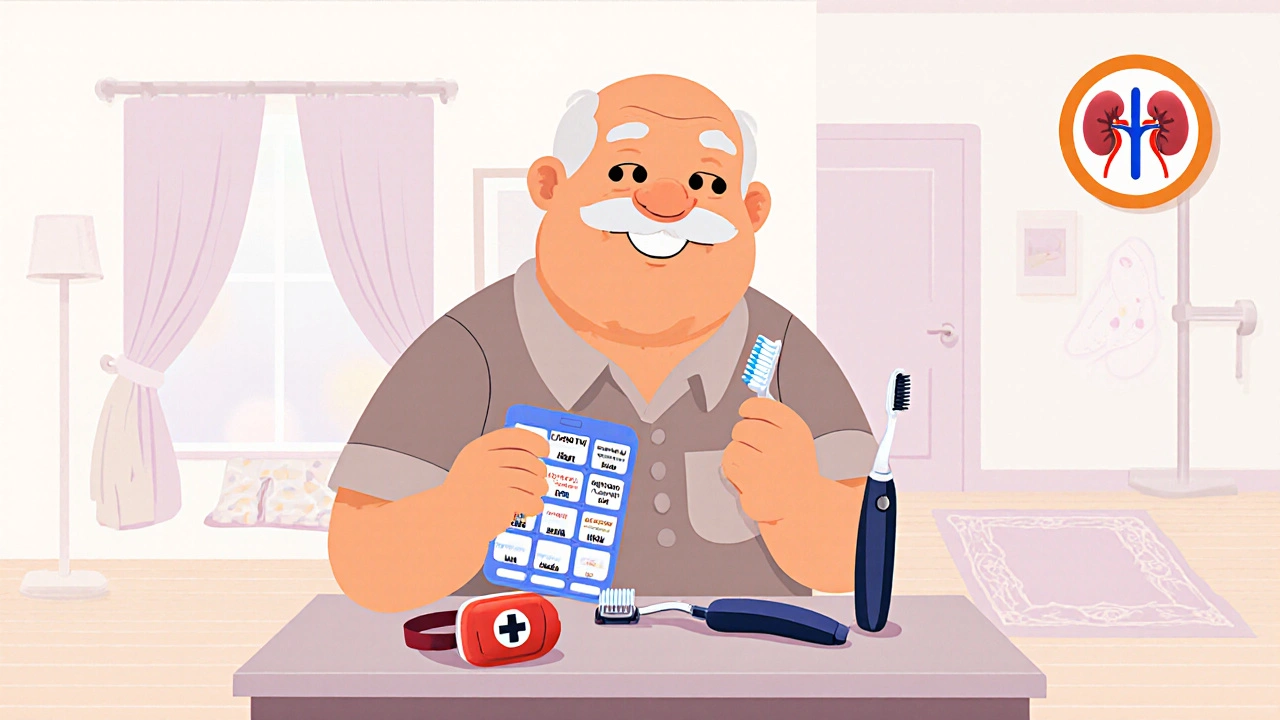
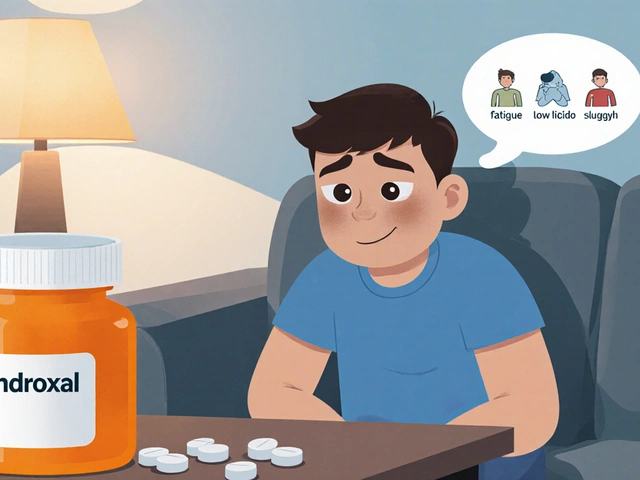


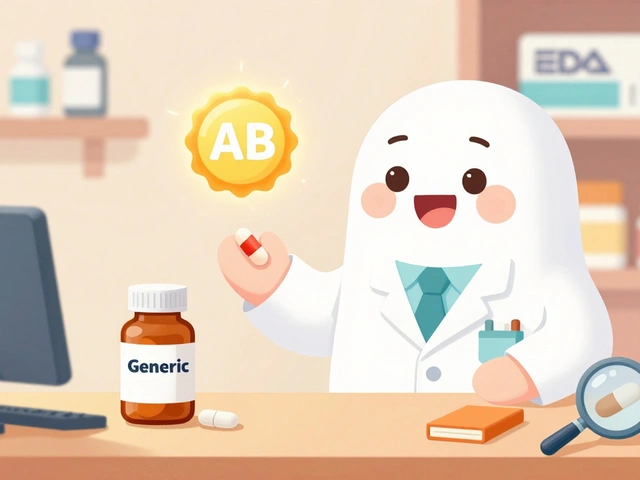
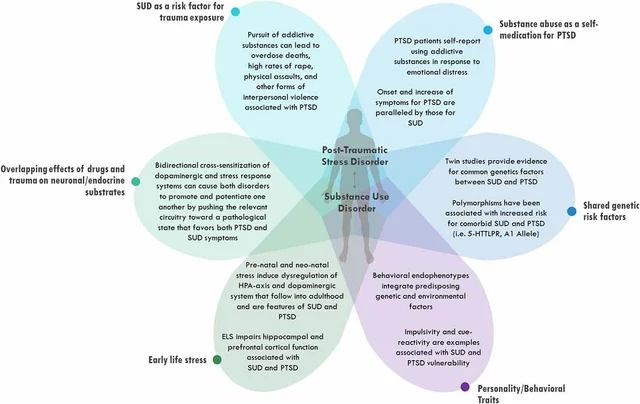
Comments(15)